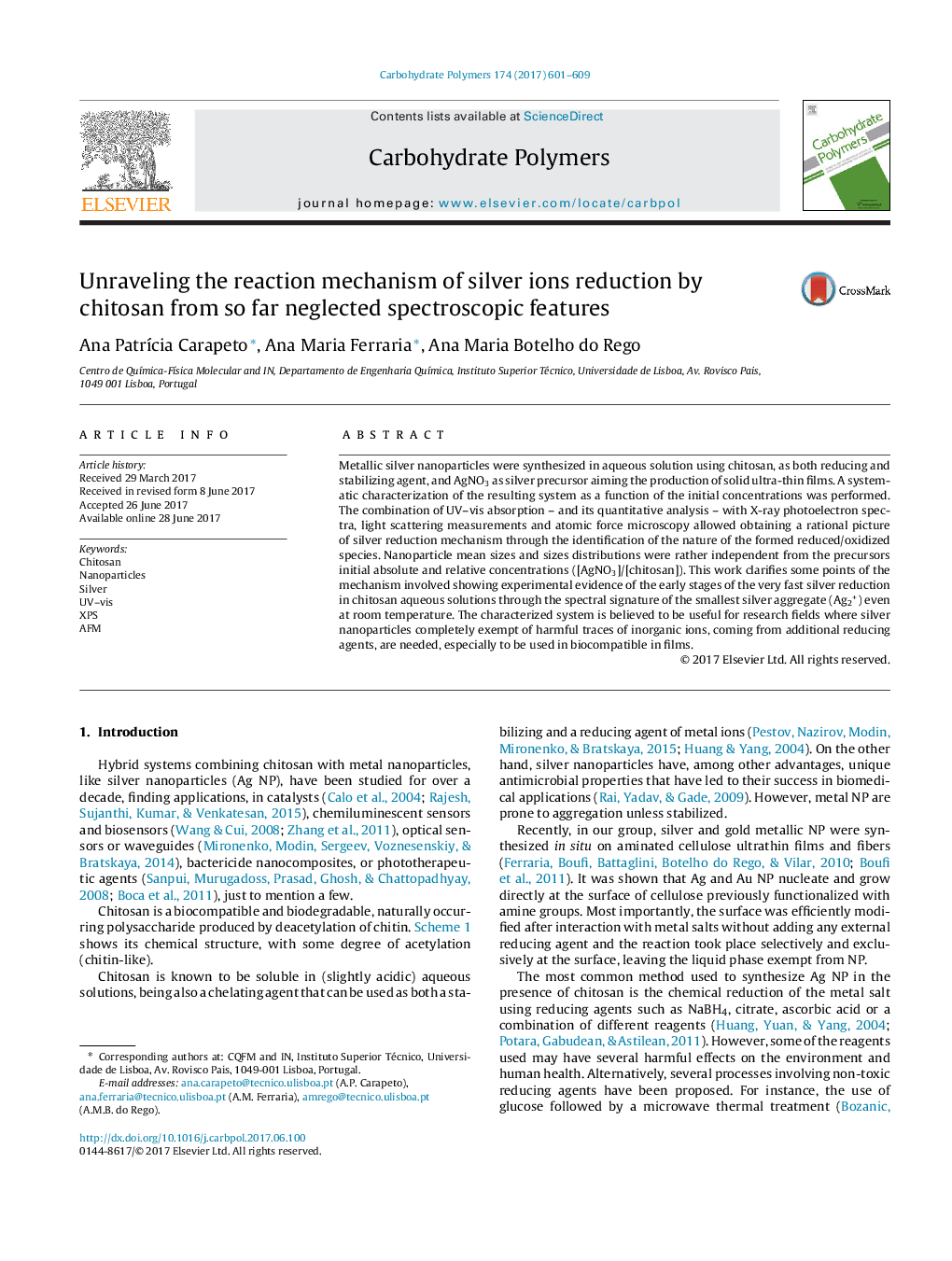| Article ID | Journal | Published Year | Pages | File Type |
|---|---|---|---|---|
| 5156846 | Carbohydrate Polymers | 2017 | 9 Pages |
Abstract
Metallic silver nanoparticles were synthesized in aqueous solution using chitosan, as both reducing and stabilizing agent, and AgNO3 as silver precursor aiming the production of solid ultra-thin films. A systematic characterization of the resulting system as a function of the initial concentrations was performed. The combination of UV-vis absorption - and its quantitative analysis - with X-ray photoelectron spectra, light scattering measurements and atomic force microscopy allowed obtaining a rational picture of silver reduction mechanism through the identification of the nature of the formed reduced/oxidized species. Nanoparticle mean sizes and sizes distributions were rather independent from the precursors initial absolute and relative concentrations ([AgNO3]/[chitosan]). This work clarifies some points of the mechanism involved showing experimental evidence of the early stages of the very fast silver reduction in chitosan aqueous solutions through the spectral signature of the smallest silver aggregate (Ag2+) even at room temperature. The characterized system is believed to be useful for research fields where silver nanoparticles completely exempt of harmful traces of inorganic ions, coming from additional reducing agents, are needed, especially to be used in biocompatible in films.
Related Topics
Physical Sciences and Engineering
Chemistry
Organic Chemistry
Authors
Ana PatrÃcia Carapeto, Ana Maria Ferraria, Ana Maria Botelho do Rego,
